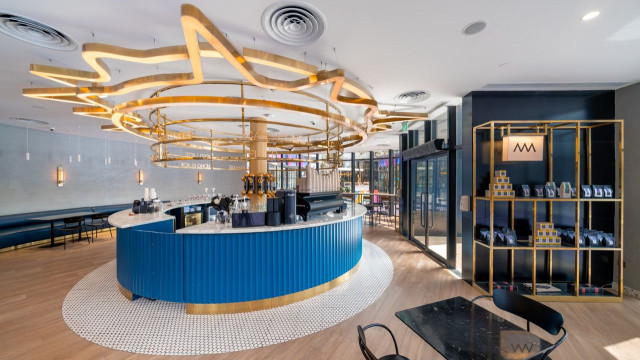In the competitive world of retail, the environment of a shop can make or destroy the customer journey. Crafting the ideal environment goes beyond just visual appeal; it plays a vital role in connecting with customers and eventually drives sales. A carefully planned retail layout ensures that every element, from layout to illumination, is in harmony with your brand image and communicates to your intended market. Understanding what a retail fit-out involves and its significance can pave the way for long-term success.
As the retail landscape advances, so do the techniques and styles associated with fit-outs. Whether you're starting a new venture or renovating an existing location, having a comprehensive manual to retail fit-outs can guide you through every stage of the process. From creative design approaches that improve customer interaction to the latest developments predicted in 2025, it's essential to remain knowledgeable and flexible. Join us as we explore the different aspects of retail fit-out strategies that can elevate your shop, create memorable experiences, and guarantee your enterprise succeeds in a bustling industry.
Grasping Retail Fit-Outs
Retail fit-outs are a method of changing a blank space into a usable and attractive environment for businesses to operate. This involves a collaboration between design, development, and branding to create a space that fits with the company's vision and boosts the shopping experience for customers. A well-executed fit-out not only meets the logistical needs of the company but also demonstrates its corporate identity, conveying crucial communication through design elements like design, color palettes, and fixtures.
The importance of retail fit-outs cannot be overstated. They play a significant role in attracting customers and affecting their buying choices. A carefully crafted space can inspire customers to allocate more time in the store, resulting in increased sales and enhanced customer loyalty. Additionally, fit-outs can assist optimize the use of space, allowing for effective product displays and a seamless flow of traffic, guaranteeing that the customer's journey is both satisfying and effective.
As retail environments change, so do fit-out trends and requirements. Staying updated on current styles and digital advancements is essential for businesses seeking to set themselves apart in a competitive market. From incorporating sustainable supplies to utilizing smart tech for a more interactive experience, the approach to retail fit-outs is continuously changing. Recognizing these trends can equip businesses to make informed decisions that not only fulfill their current needs but also prepare their retail spaces.
A Retail Fitting Procedure
The retail fit-out process is an comprehensive process that converts an empty area into a fully functional commercial environment. At first, it begins with a thorough assessment of the current space, where important considerations such as design, illumination, and branding come into play. Preparation is important, as this phase involves working together with design specialists and architectural experts to create a concept that aligns with the brand's vision while enhancing customer engagement. Establishing an solid design brief that specifies preferences for materials, colors, and overall appearance will guide the project through the following phases.
After the design is finalized, the construction phase begins. This is where the real fit-out takes shape, involving a meticulous build-out of the area according to the approved plans. Ongoing click here to read with builders and project managers is essential during this phase to ensure the project remains on schedule and inside budget. Managing deadlines effectively helps to avoid common pitfalls, such as holdups or unexpected costs, which can disrupt the effort and lead to frustration for all parties.
Once the construction and installation are finished, the final details and quality assessments occur before the official launch. This stage includes ensuring that all installations, fittings, and signage are correctly installed and functional. A soft opening can be beneficial, allowing for adjustments based on customer responses before the full-scale launch. By following a systematic retail fit-out process, companies can create inviting and efficient retail spaces that enhance the customer experience and contribute to higher sales.

Financing and Financing Your Retail Fit-Out
Budgeting for your fit-out is a critical step that can determine the outcome of your project. Start by outlining all potential costs, which include materials, labor, permits, and design fees. By developing a detailed budget, you can focus on essential features while allowing for adjustments in less important areas. Consider also allocating a contingency fund to cover unforeseen expenses that may arise during the renovation project. This preventative approach will enable you to oversee your finances more efficiently and reduce the risk of going over budget.
Financing options for your fit-out can differ widely depending on your company size and financial situation. Small businesses might consider options like microloans, public funding, or using self-funding. For bigger enterprises, traditional bank loans and lines of credit can be viable paths. Additionally, some retailers may gain advantage from alliances with suppliers or rental agreements, which can help distribute costs over time. Investigating all potential funding avenues will enable you to choose the best option tailored to your specific needs.
As you navigate your retail fit-out project, being aware of potential undisclosed expenses can significantly impact your overall budget. Factors such as holdups in building, changes in design, and unexpected regulatory fees can influence your financial plan. To avoid these issues, maintain open communication with your builders and have a solid understanding of the schedule and extent of tasks involved. Regularly reviewing your budget and adapting as needed will ensure that you stay on track and can make informed decisions throughout the fit-out journey.
